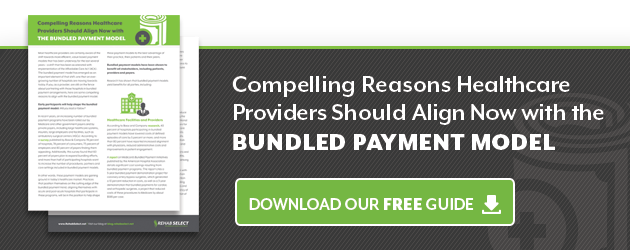 The bundled payment initiative for joint replacement surgeries was set to begin on April 1, 2016. This initiative, finalized by the Centers for Medicare & Medicaid Services (CMS) in November, 2015, is known as the Comprehensive Care for Joint Replacement (CJR) model and will affect, as of its start date, approximately 800 hospitals that deliver care to Medicare fee-for-service beneficiaries for hip and knee replacements and/or other major leg procedures. Here we'll get into the basic details that patients and caregivers will need to know about this initiative.
The bundled payment initiative for joint replacement surgeries was set to begin on April 1, 2016. This initiative, finalized by the Centers for Medicare & Medicaid Services (CMS) in November, 2015, is known as the Comprehensive Care for Joint Replacement (CJR) model and will affect, as of its start date, approximately 800 hospitals that deliver care to Medicare fee-for-service beneficiaries for hip and knee replacements and/or other major leg procedures. Here we'll get into the basic details that patients and caregivers will need to know about this initiative.
According to CMS, the goal of the CJR bundled payment initiative is to support better and more efficient care for Medicare beneficiaries who will undergo hip and/or knee replacement surgeries – also known as lower extremity joint replacements (LEJR). This initiative, according to the agency, tests bundled payment and quality measurement for an episode of care associated with these procedures to encourage hospitals, physicians, and post-acute care providers to work together to improve the quality and coordination of care from the initial hospitalization through recovery. These procedures were chosen for this payment model for two basic reasons. First, they're chosen because they are the most common inpatient surgeries performed on Medicare beneficiaries, and second, because they require long recoveries that provide opportunities to reward providers for improving patient outcomes.
The episode of care, as defined by this initiative, begins when a patient is admitted to the hospital and ends 90 days post-discharge in order to cover the recovery/rehabilitation period. It includes virtually all related items and services paid under Medicare Part A and Part B for Medicare fee-for-service beneficiaries. Participating hospitals will receive episode target prices for joint replacement surgeries each year – one for MS-DRG 469 (major joint replacement or reattachment of a lower extremity with major complications or comorbidities) and a separate target price for 470 (Major joint replacement or reattachment of lower extremity without major complications or comorbidities).
Providers will be paid according to the usual bundled payment system rules throughout the year. At the end of the year, actual spending for each episode of care will be compared to the Medicare target price. Hospitals responsible for the bundled payments that come in under budget and meet quality benchmarks will receive a bonus payment from Medicare, while those that run over the spending target and/or fail to meet quality standards will owe the agency money.
CMS states that Medicare beneficiaries will retain their freedom in choosing services and providers under the CJR model, and that physicians and hospitals will be expected to meet all current standards required by the Medicare program. Existing safeguards to protect patients will remain in place, and the rule also includes additional monitoring of claims data to ensure that all necessary services continue to be provided under this new payment model. In short, CMS expects that joint replacement patients will not experience any reduction in quality of care. Rather, joint replacement patients should, as the initiative progresses, begin to see improvements in the overall efficiency, quality, and coordination of care.





